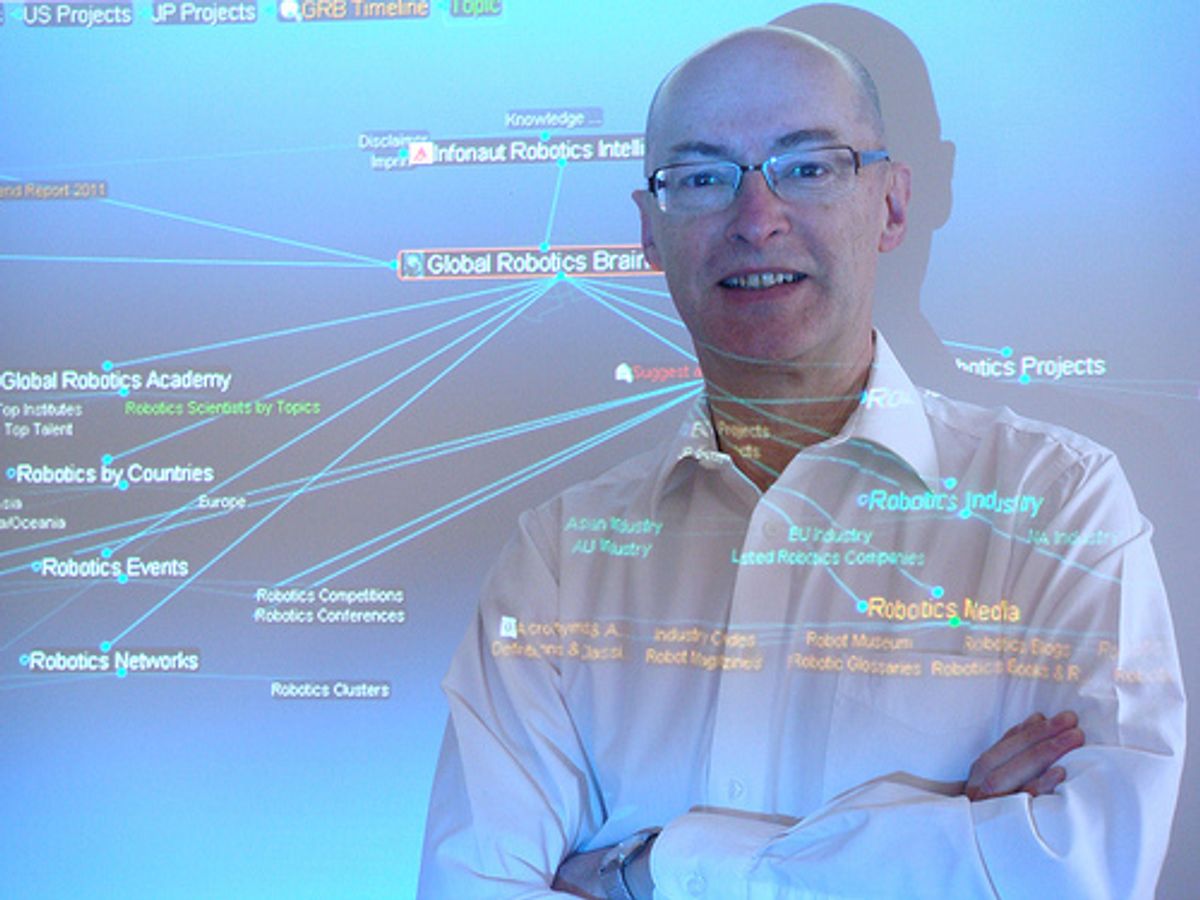Why is this man smiling?
Because in his brain resides a database with more than 36,000 robotics companies, robotics labs, robotics projects, robotics researchers, and robotics publications, all categorized, tagged, and linked.
No, not in the brain inside his head. We're talking about the Global Robotics Brain, a project that the man, Wolfgang Heller, started to keep track of the robotsphere.
Inspired by Google's PageRank, Heller, a business intelligence consultant from Sweden, asked himself: Could he use a similar approach to draw a map of interactions between the different robotics players and identify who is doing the most relevant work? What trends are emerging?
In 2005, after a visit to the World Robotics Exhibition in Aichi, Japan, he started to systematically feed his database with anything related to robotics he came across. He then created tools to automate the process. Six years later, the result is a "gigantic mindmap of a broad range of robotics resources," he tells me.
Heller isn't building this brain for fun. His hope is that companies and labs will pay him to access it. A free version is available for students and researchers for personal use; an expanded version with more detailed information is available for organizations on an annual subscription basis.
In the expanded version, you'll find insights on robotics trends that Heller generates periodically (using, we should note, both his brain and the database brain). Here's his latest list of robotics trends:
1. Industrial robotics renaissance. Soft mobile robots start working alongside human workers. Examples: Toyota safe human-robot factory assembling, Festo Bionic Handling Assistant, pi4 Workerbot, Robonaut2).
2. Urban service robotics renaissance. Smart mobile robots enter public space for safe and green city living. Examples: Dustbot, Google autonomous car, ubiquitous robotics, Cyber-Physical-Systems.
3. Civil robotics Renaissance. Transfer of military robotics into civilian robot application. Examples: Telepresence robots, civil UAV & UGV, telesurgery, rescue, Ambient Assisted Living.
4. Robotics toy-to-tool renaissance. New generation reinvents and remixes robotics technology, artificial intelligence, information and communication technologies, nano and biotechnology into new toy-to-tool robot platforms. Examples: Nao, PR2, Kinect, ROS.
5. Robotics promotion renaissance. Governments have recognized robotics as strategic technology that requires R&D investments and public awareness. Examples: National robotics roadmaps, flagship research programs, establishment of centers of excellence, robotics science and amusements parks, national robotics weeks, robotics challenges.
Check out the Global Robotics Brain to see if you envisage other trends. Try to look where the investment is coming from, where the research is taking place, where technology gets commercialized, and so forth. Soon you’ll start feeling like you also have a robotics brain.
Samuel Bouchard is a co-founder of Robotiq.




